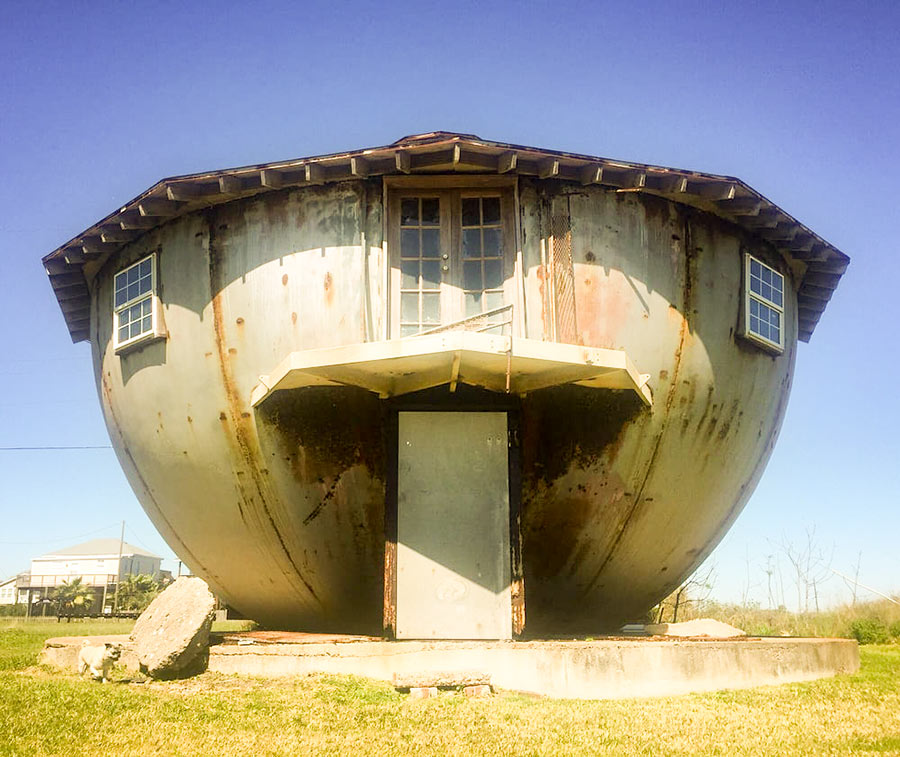
Forget all the crazy rumors and stories you’ve heard about the Galveston Kettle House. The actual most likely true story of how the unusual Galveston West Beach-area landmark known as the Kettle House came to be — and what’s about to happen to it — has at long last been revealed by the builder’s daughter (and current owner), Mary Etheridge-Rachels, to Dallas-area writer Linda Armstrong.
Among the shocking revelations — well, okay, interesting facts — included in Armstrong’s account of the steel bowl’s history, pieced together from her interviews with Etheridge-Rachels:
***
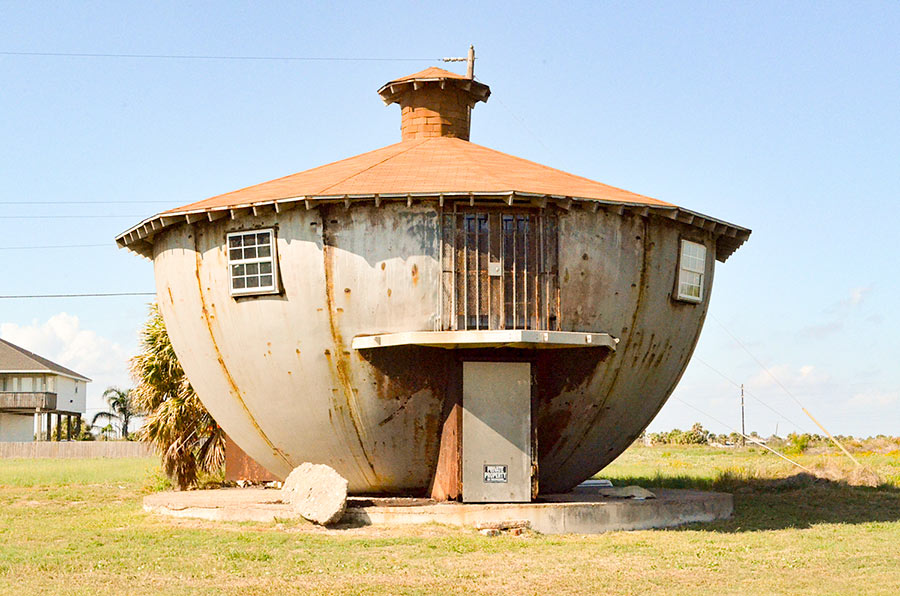
- The home at 1410 Miramar Dr. in Galveston off the San Luis Pass was built by Clayton E. Stokley, a WWII veteran, talented welder, and shop foreman at Graver Tank & Manufacturing Co. in Pasadena, in the late 1960s. Stokley regularly took advantage of his firm’s policy of offering steel products to its workers at cost.
- According to his daughter, Stokley built at least 3 other structures from Graver steel-tank parts and operated businesses in them: “a convenience and liquor store on Navigation Street [sic], a convenience store on Harrisburg, and a nightclub off 45 and highway 646.â€
- The Kettle House was originally intended to serve as a drive-up convenience and liquor store.
- The structure takes its shape from the leftover parts made available after Graver had constructed a large sphere for a client out of three-eighths-in.-thick steel. After the deal with the client fell through, Stokley bought it and took it apart.
- The parts were shipped to Galveston on an 18-wheeler, where Stokley, his children, wife, siblings, friends, and assorted relatives worked on weekends over several months to assemble the structure.
- The structure was designed to have an open floor plan suitable for a store, with a spiral staircase in the middle leading to a second floor living quarters for the store manager.
- Stokley suffered a stroke before the buildout could be completed, leaving the second level incomplete. He passed away in 2005.
- The original roof rusted and caved in, so Stokley’s family replaced it with a “traditional, yet oddly shaped, composite roof.â€
- Additional work was completed after the roof was replaced: The second level was finished out with a living room, kitchenette, bathroom, water heater, and AC. Also: windows on the second level and a French door over the entrance.
- Among the uncompleted plans for the property considered by its current owner: an outdoor deck and stairs leading to the second-floor French doors.
- No one has ever lived in the house. “We always saw the place as more of a project than somewhere to live or vacation,†Etheridge-Rachels tells Armstrong. “One year I let some friends stay in it for the biker rally. But those are the only people that have ever stayed in it overnight.â€
- Vandals broke in recently and spray-painted the interior, so the Kettle House has now been boarded up.
Etheridge-Rachels now says she’s ready to sell the property — and already has a buyer.
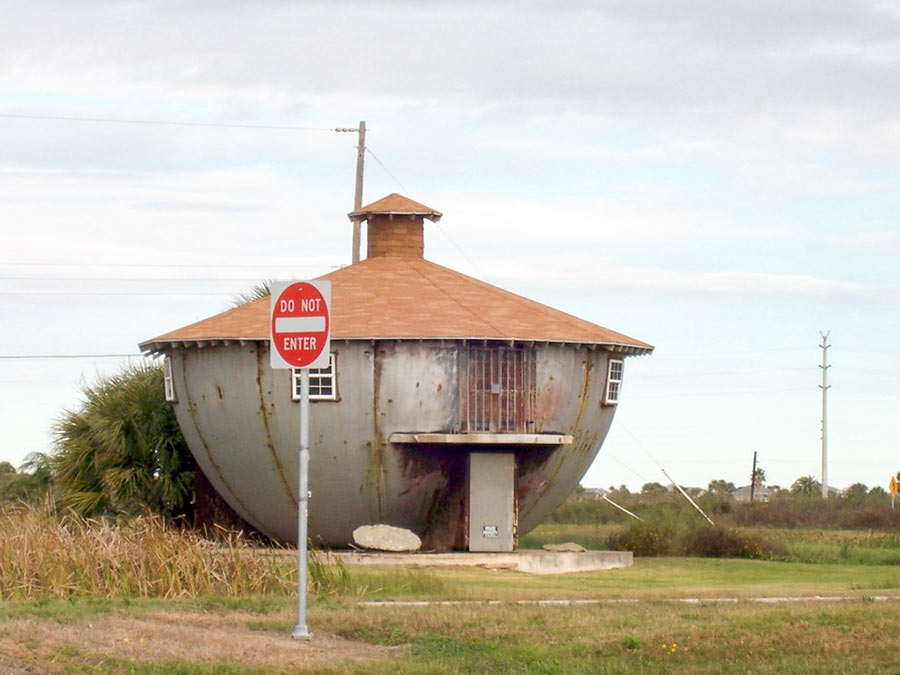
- Galveston’s Kettle House: Legacy and Landmark [Galveston Kettle House]
Photos:Suey N. (top); Patti Haskins (middle) [license];Â Elizabeth Kendall (bottom) [license];Â


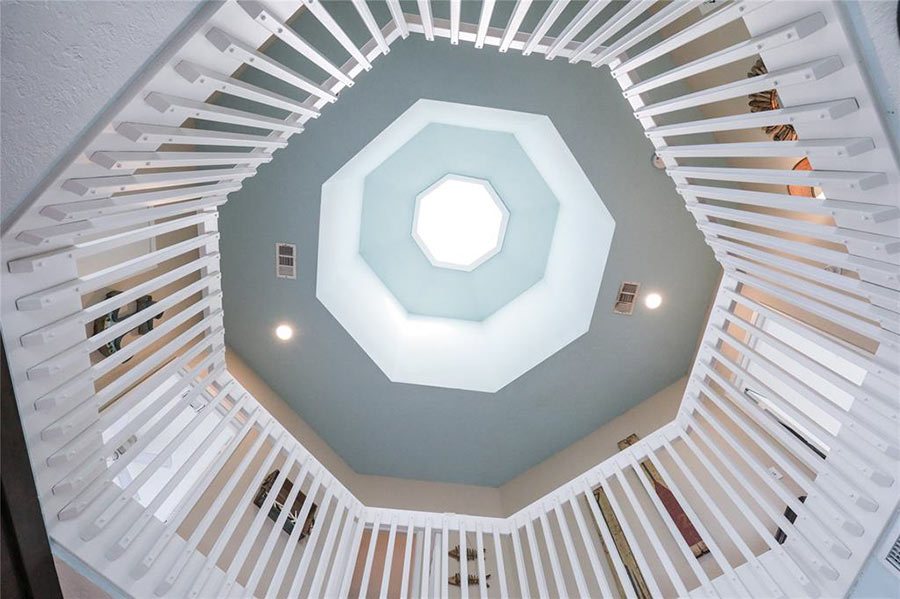
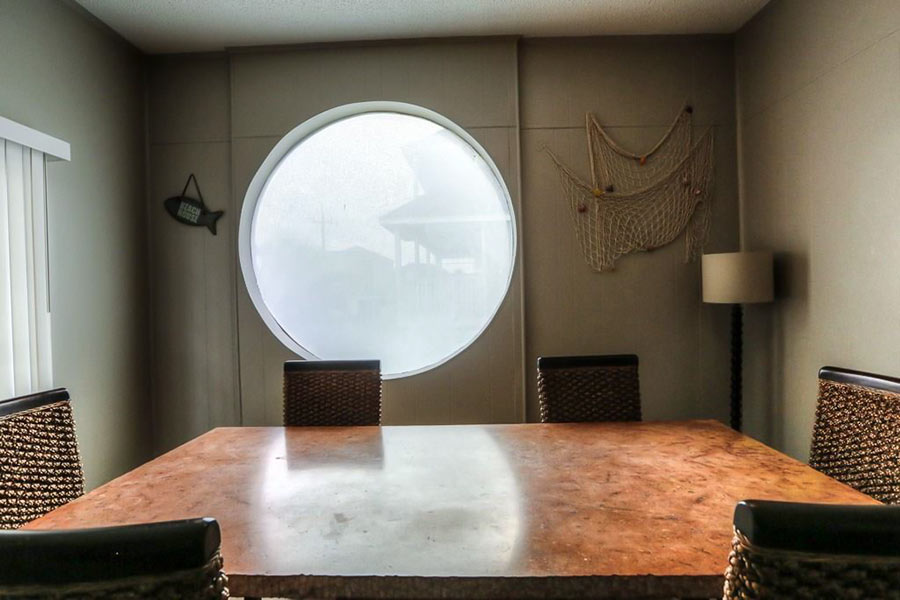

Always wondered.
Very cool. I hope the new owner will restore it and make it functional.
I wonder about that wonderful oddity every time I pass by it. It should be preserved and enjoyed.
What, no interior pics?
My best friend Susan Stokly was related to Clayton Stokly she resides in Colorado! That is very interesting and I love that house! I’ve been seeing it for years and now I know thank you
Awesome but what about interior pictures?
I hope it lives on.
My wife and I will give up our house in Michigan for that… Damn would be fun to get in there and finish it